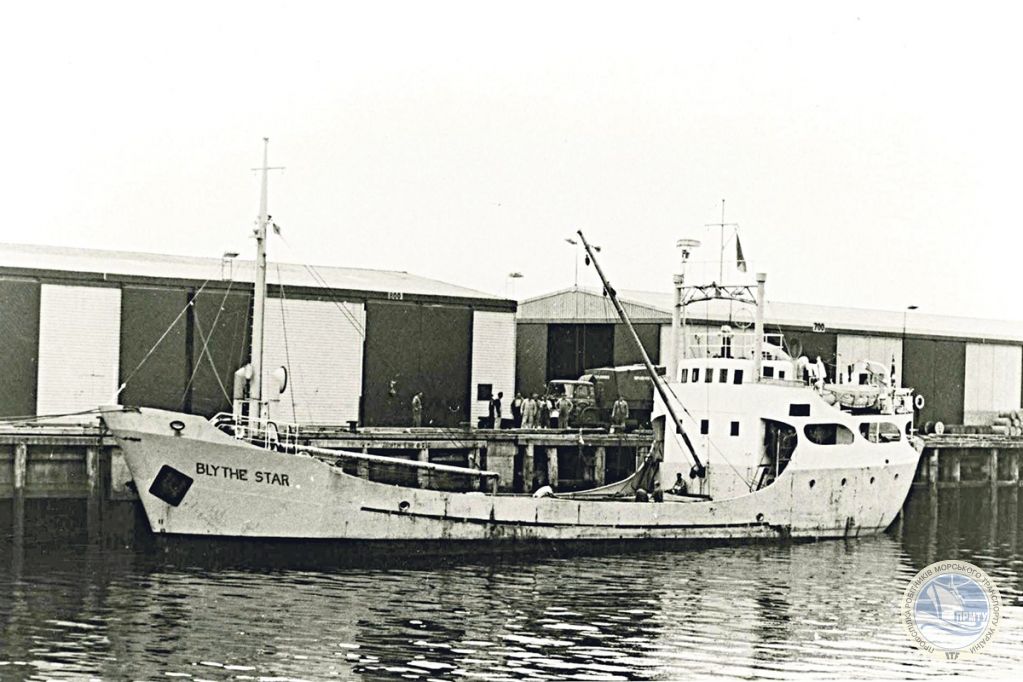After almost fifty years, the families and sole surviving crew member of the Blythe Star, have learned where their ship rests on the seafloor of the South Pacific Ocean, off the South West Cape of Tasmania.
The shock discovery of the Blythe Star, almost 50 years since its mysterious sinking, is a chilling and poignant reminder of one of the most significant moments in Australian seafaring history; one that led to significant and lasting reforms to shipboard safety and improved search and rescue procedures which have protected the lives of many thousands of seafarers since.
The 44-metre motor vessel (MV) Blythe Star was a coastal freighter that disappeared off Tasmania nearly 50 years ago. The vessel was travelling from Hobart to King Island when, on 13 October 1973, it suddenly capsized and sank off the southwest coast of Tasmania. All 10 crew members were able to escape the sinking vessel into an inflatable life raft.
Tragically, three crew members died before the survivors were able to find help and be rescued 12 days later on 24 October 1973.
One of the survivors, a plucky 18-year-old named Mick Doleman, would survive the tragic and harrowing ordeal to go on and lead his seafaring comrades as a branch official with the Seamen’s Union of Australia and then the Maritime Union of Australia as its Deputy National Secretary, for over 30 years.
The Blythe Star’s tragedy arose from the Tasmanian Transport Commission’s indifference to safety and their mishandling of earlier critical incidents. On an earlier voyage with empty tanks, the ship had almost capsized, but no changes were implemented, no lessons learned, and no information provided to future crews to prevent disaster.
The location of the MV Blythe Star was confirmed by the CSIRO’s Marine National Facility, using its research vessel, the RV Investigator, on 12 April 2023 during a 38‑day research voyage to study a submarine (underwater) landslide off the west coast of Tasmania. This voyage included a piggyback project to investigate an unidentified shipwreck which had been pinpointed by fishing vessels and previous seafloor surveys in the region.
This involved the systematic mapping of the unidentified shipwreck using multibeam echosounders and then a visual inspection using two underwater camera systems. The mapping data and video imagery collected by the CSIRO was able to confirm that the shipwreck was the MV Blythe Star.
According to the CSIRO, the wreck of the MV Blythe Star is located approximately 10.5 km west of South West Cape, Tasmania and lies in 150 metres of water. The investigation showed the vessel is intact and sitting upright on the seafloor, with its bow pointing northwest. The visual inspection using the underwater cameras was able to identify key features to confirm the wreck was the MV Blythe Star. This included identifying part of the vessel name – ‘STAR’ – on the ship’s bow.
The wreck was covered with a minimal growth of algae and seaweed, and some structures showed signs of damage, particularly on the stern. Most notably, the vessel’s wheelhouse is no longer present.
MUA National Secretary Paddy Crumlin said “The Blythe Star discovery is a visceral reminder of the importance of Australian Merchant shipping and the professionalism, teamwork, character and extraordinary courage in the face of great danger upon which our rich and at times tragic maritime heritage is based. It is a timely and instructive development as the Federal Albanese Government seeks to renew and entrench that history into Australia’s current and future national interest and security.”
The discovery marks the final chapter of an Australian shipping tragedy that has had a lasting impact on the management and regulation of Australian shipping in the latter half of the 20th century.




